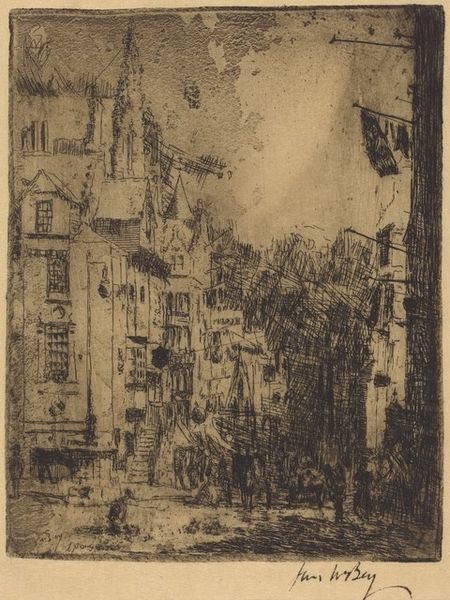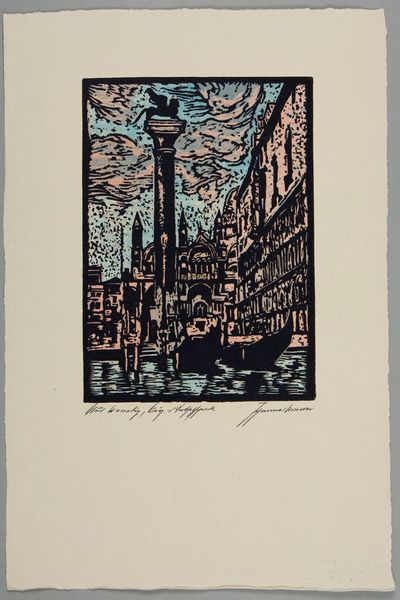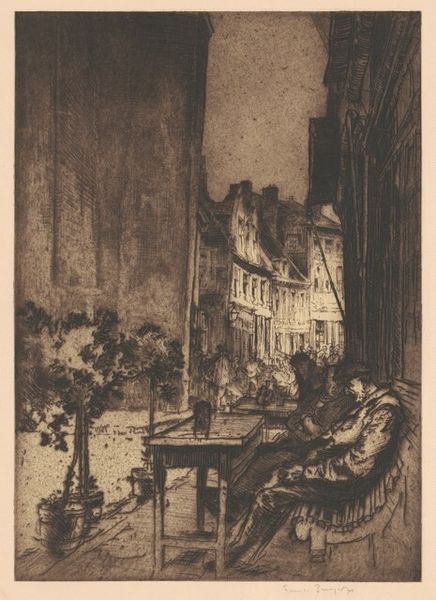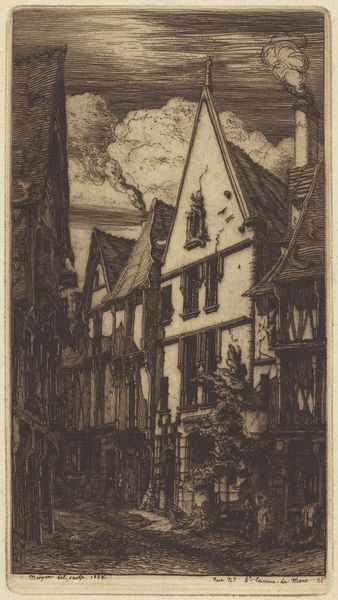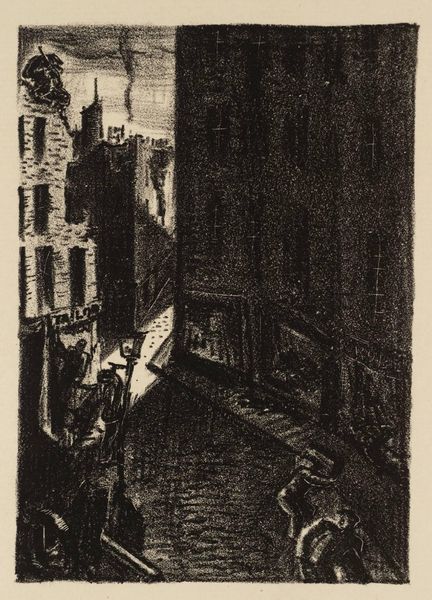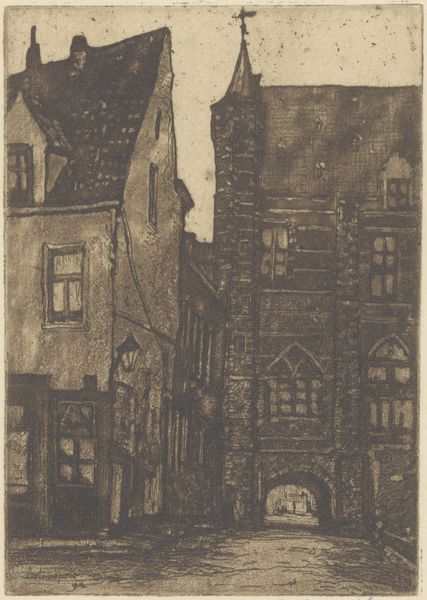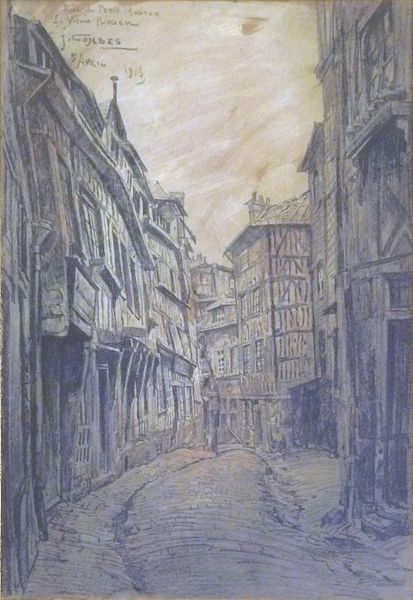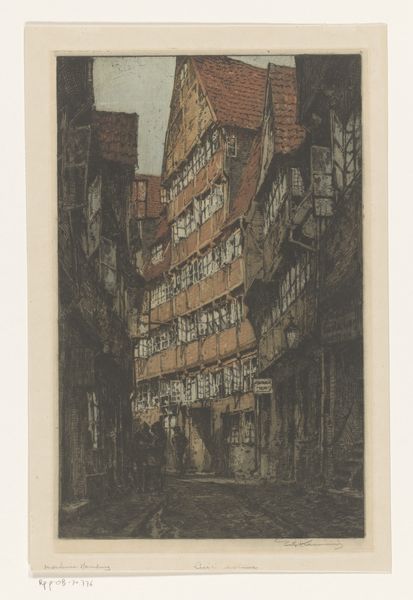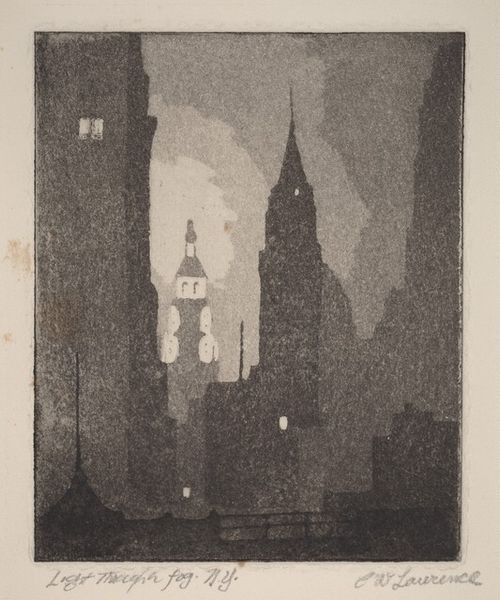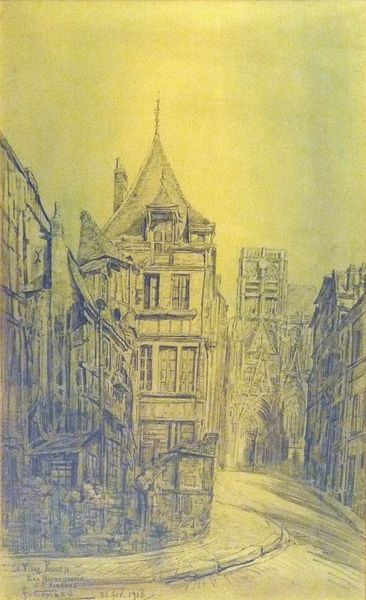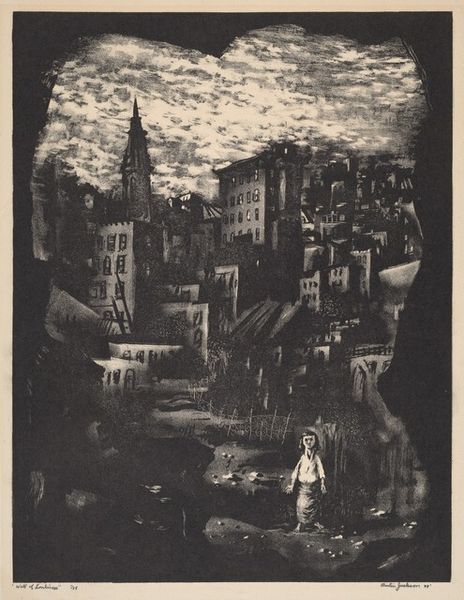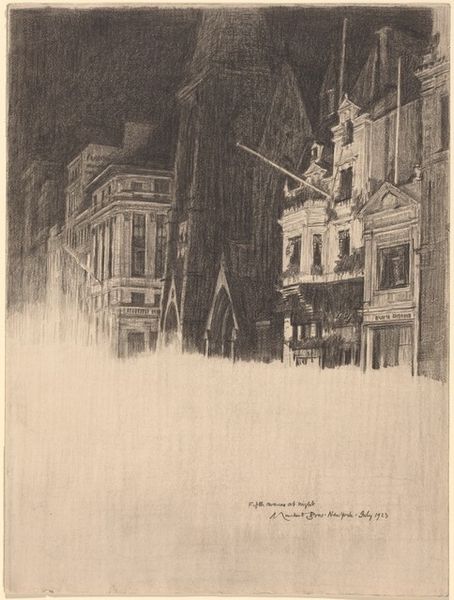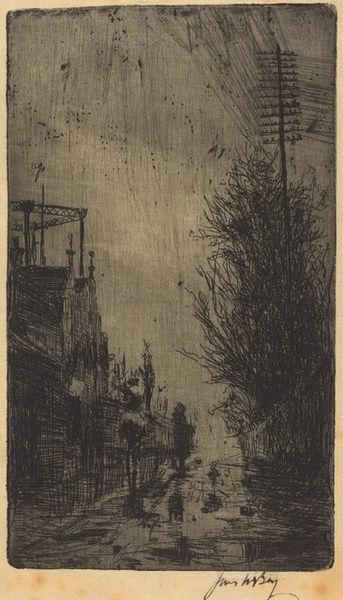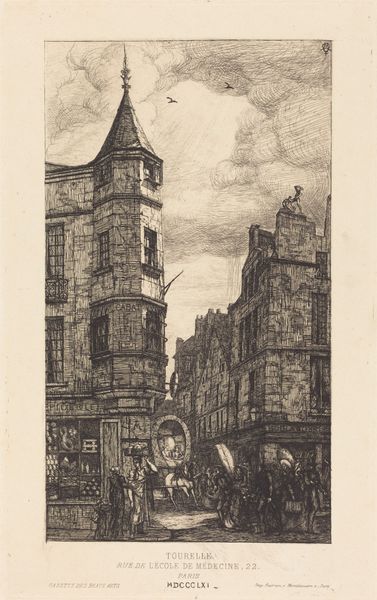
print, woodcut
# print
#
german-expressionism
#
expressionism
#
woodcut
#
cityscape
Dimensions: plate: 31.5 x 24.8 cm (12 3/8 x 9 3/4 in.) sheet: 35 x 33.3 cm (13 3/4 x 13 1/8 in.)
Copyright: National Gallery of Art: CC0 1.0
Curator: Let's turn our attention to this striking cityscape from 1921. It's titled "Lüneburg," a woodcut print created by Karl Wilhelm Arthur Illies. Editor: It has a haunting feel. The palette is somber, blues and yellows, with strong shadows that seem to lengthen the buildings. There's something both grand and unsettling about this composition. Curator: Given that Illies situated himself within German Expressionism, these emotionally loaded colours are completely aligned with the art movement, and that intensity extends to the visible labour inherent in the printmaking. The thick lines, the rough texture of the woodblock itself—these point to a very deliberate production process. Editor: Yes, but it is the single source of light that grabs my attention – the almost ethereal glow above illuminating the facades. Light has always held strong symbolic associations; here, the lamp is a beacon, guiding us through what could otherwise be a bleak landscape. It also draws the eye upwards, making us contemplate more than just the street level. Curator: Absolutely, the interplay between darkness and light in expressionist prints often mirrored social tensions of the time. Consider the socio-economic landscape in Germany post-World War I— rampant inflation, political instability... these would absolutely impact the materials and means of producing art, as well as what was depicted. Woodcuts, for example, were a more accessible medium compared to elaborate oil paintings. Editor: Which speaks to a democratization of imagery, a broader access to artistic output. Perhaps that glow, as you put it, does not only serve a practical function but suggests hope and direction in challenging times? You are totally right about post-war angst but here you find in this architectural configuration a silent dialogue about stability in what may be an otherwise transient existence, represented as stone. Curator: Indeed. Looking closely, we can appreciate the labor and the deliberate choices Illies made, as well as recognizing the environment that affected production, offering insights to a pivotal time. Editor: And perhaps understanding a fragment of what endures. It seems there are stories written in its blocks of architecture illuminated in this singular and spectral urban beacon.
Comments
No comments
Be the first to comment and join the conversation on the ultimate creative platform.
